I have this sample data:
Sample Replication Days
1 1 10
1 1 14
1 1 13
1 1 14
2 1 NA
2 1 5
2 1 18
2 1 20
1 2 16
1 2 NA
1 2 18
1 2 21
2 2 15
2 2 7
2 2 12
2 2 14
I have four observations for each sample with a total of 64 samples in each of the two replications. In total, I have 512 values for both the replications. I also have some missing values designated as 'NA'. I prformed ANOVA for Mean values for each Sample for each Rep that I generated using
library(tidyverse)
df <- Data %>% group_by(Sample, Rep) %>% summarise(Mean = mean(Days, na.rm = TRUE))
curve.anova <- aov(Mean~Rep+Sample, data=df)
Result of anova is:
> summary(curve.anova)
Df Sum Sq Mean Sq F value Pr(>F)
Rep 1 6.1 6.071 2.951 0.0915 .
Sample 63 1760.5 27.945 13.585 <2e-16 ***
Residuals 54 111.1 2.057
I created a table for mean and SE values,
ANOVA<-lsmeans(curve.anova, ~Sample)
ANOVA<-summary(ANOVA)
write.csv(ANOVA, file="Desktop/ANOVA.csv")
A few lines from file are:
Sample lsmean SE df lower.CL upper.CL
1 24.875 1.014145417 54 22.84176086 26.90823914
2 25.5 1.014145417 54 23.46676086 27.53323914
3 31.32575758 1.440722628 54 28.43728262 34.21423253
4 26.375 1.014145417 54 24.34176086 28.40823914
5 26.42424242 1.440722628 54 23.53576747 29.31271738
6 25.5 1.014145417 54 23.46676086 27.53323914
7 28.375 1.014145417 54 26.34176086 30.40823914
8 24.875 1.014145417 54 22.84176086 26.90823914
9 21.16666667 1.014145417 54 19.13342752 23.19990581
10 23.875 1.014145417 54 21.84176086 25.90823914
df for all 64 samples is 54 and the error bars in the ggplot are mostly equal for all the Samples. SE values are larger than the manually calculated values. Based on anova results, df=54 is for residuals.
I want to double check the ANOVA results so that they are correct and I am correctly generating lsmeans and SE to plot a bargraph using ggplot with confirdence interval error bars.
I will appreciate any help. Thank you!

